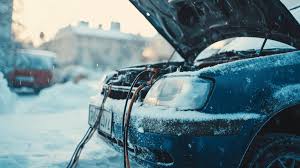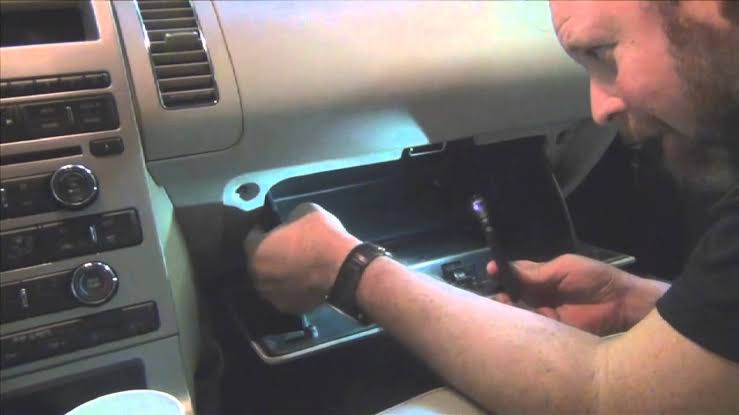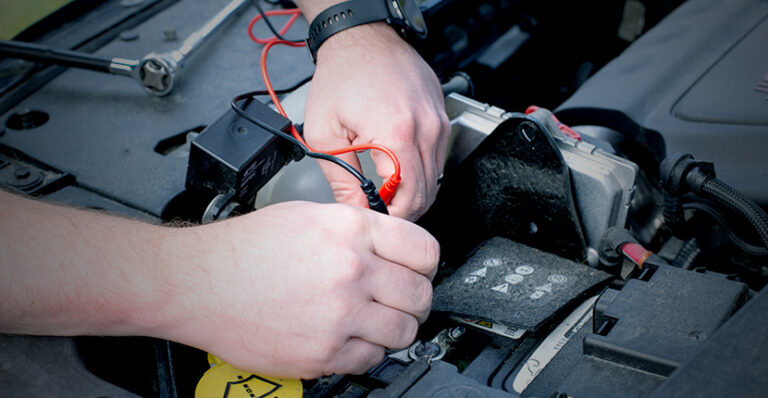Can a Crankshaft Sensor Cause No Start?

The crankshaft sensor is an essential component in your vehicle’s engine management system. It monitors the rotation of the crankshaft, providing crucial data to the engine control unit (ECU) for ignition timing and fuel injection. So, if you’re wondering, “Can a crankshaft sensor cause no start?”, the answer is yes, it absolutely can.
A faulty crankshaft position sensor can prevent the engine from starting, or cause it to stall during operation. In this article, we’ll discuss the role of the crankshaft sensor, how a malfunctioning sensor affects engine performance, and how to diagnose and fix the problem.
What is a Crankshaft Position Sensor?
The crankshaft position sensor (CKP) is located near the crankshaft and measures its rotational position. It sends this data to the ECU, which uses it to control various engine functions, including:
- Ignition timing: Determines when to ignite the air-fuel mixture.
- Fuel injection timing: Tells the ECU when to inject fuel into the engine.
- Engine speed: Helps manage engine RPM (revolutions per minute) for smoother operation.
Without accurate data from the crankshaft sensor, the engine may not function properly. If the sensor fails, the ECU won’t know when to fire the spark plugs or inject fuel, leading to starting problems.
Symptoms of a Bad Crankshaft Sensor
A malfunctioning crankshaft position sensor can manifest in several ways. Here are some common symptoms that may indicate the sensor is faulty:
1. No Start Condition
One of the most noticeable signs of a bad crankshaft sensor is the no start condition. The engine may turn over, but it won’t start because the ECU cannot get the necessary information about the crankshaft’s position to time the ignition and fuel injection.
2. Engine Stalling
Even if the engine does start, a faulty crankshaft sensor can cause it to stall shortly after ignition. This is because the sensor provides real-time information for the engine to continue running, and without that data, the engine cannot maintain smooth operation.
3. Rough Idling
If the crankshaft sensor is malfunctioning, the engine might run roughly, especially at idle speeds. This is due to improper timing of the fuel injection and spark events, which can result in an unstable engine performance.
4. Check Engine Light
A bad crankshaft sensor often triggers the check engine light on your dashboard. The ECU will detect a malfunction in the sensor and store an error code, such as P0335 (crankshaft position sensor circuit malfunction), which can be read with an OBD-II scanner.
5. Poor Acceleration
In some cases, the vehicle might experience poor acceleration or hesitation while driving. This happens because the engine control unit doesn’t have accurate data on the crankshaft’s speed, affecting how the fuel and ignition systems operate.
How Does a Bad Crankshaft Sensor Prevent the Car from Starting?
The crankshaft position sensor provides the ECU with vital information about the crankshaft’s position and speed. This data is necessary to:
- Control ignition timing: The ECU must know when to send a spark to the spark plugs, ensuring combustion occurs at the right time.
- Control fuel injection: The ECU uses the crankshaft data to inject the right amount of fuel at the right time.
If the crankshaft sensor is faulty, the ECU won’t receive accurate information, and it won’t know when to ignite the air-fuel mixture. Without this, the engine may fail to start, or it may start and stall immediately.
How to Diagnose a Bad Crankshaft Sensor
If you suspect that a bad crankshaft sensor is causing a no-start condition, here’s how you can diagnose it:
1. Check for Error Codes
Use an OBD-II scanner to check for error codes. A malfunctioning crankshaft position sensor typically triggers codes like P0335 (crankshaft position sensor A circuit) or P0336 (crankshaft position sensor A circuit range/performance problem). These codes will give you a good indication of a sensor issue.
2. Visual Inspection
Perform a visual inspection of the crankshaft position sensor and its wiring. Look for obvious signs of damage, such as frayed wires, loose connections, or corrosion on the sensor terminals.
3. Test the Sensor with a Multimeter
You can test the crankshaft sensor with a multimeter to check its resistance and voltage output. The specific test procedure will vary depending on your vehicle’s make and model, so refer to your owner’s manual or service manual for the proper testing procedure.
4. Check the Crankshaft Sensor Signal
Using an oscilloscope, you can check the signal from the crankshaft sensor while cranking the engine. If there is no signal or the signal is inconsistent, the sensor is likely defective.
5. Check the Voltage Supply
Ensure the crankshaft sensor is receiving the proper voltage supply from the ECU. If there is no voltage, the sensor may be faulty or there may be an issue with the wiring.
Can a Bad Crankshaft Sensor Be Fixed?
In most cases, a faulty crankshaft sensor needs to be replaced rather than repaired. The sensor is usually located on the engine block, and while replacement can be done at home, it can be challenging for beginners due to its location.
Steps to Replace a Bad Crankshaft Sensor:
- Locate the Crankshaft Sensor: The crankshaft sensor is typically located near the crankshaft pulley or flywheel. You may need to remove some components to access it.
- Disconnect the Battery: To avoid any electrical issues, always disconnect the negative terminal of the battery before working on electrical components.
- Remove the Old Sensor: Disconnect the wiring harness from the faulty sensor and remove any bolts securing it in place.
- Install the New Sensor: Position the new sensor and secure it with bolts. Reconnect the wiring harness to the new sensor.
- Reconnect the Battery: Once the new sensor is in place, reconnect the negative terminal of the battery.
- Test the System: Start the engine and check for any signs of improvement. Ensure that the vehicle starts properly and the engine runs smoothly.
Conclusion
In summary, yes, a bad crankshaft sensor can cause a no-start condition in your vehicle. This essential component provides vital information for the engine’s timing and fuel injection systems. Without accurate data from the crankshaft sensor, the engine may fail to start or run improperly.
If you experience a no-start condition, rough idling, or poor acceleration, it’s important to inspect the crankshaft sensor and its related components. You can diagnose the issue using error codes, visual inspections, and multimeter tests. Replacing the faulty sensor is usually the best solution, and in most cases, it’s a relatively straightforward process.
If you’re not comfortable diagnosing or replacing the sensor yourself, it’s best to consult a professional mechanic to ensure the problem is fixed properly.
Also Check:
• How to Tell If You Have a Bad Starter






One Comment